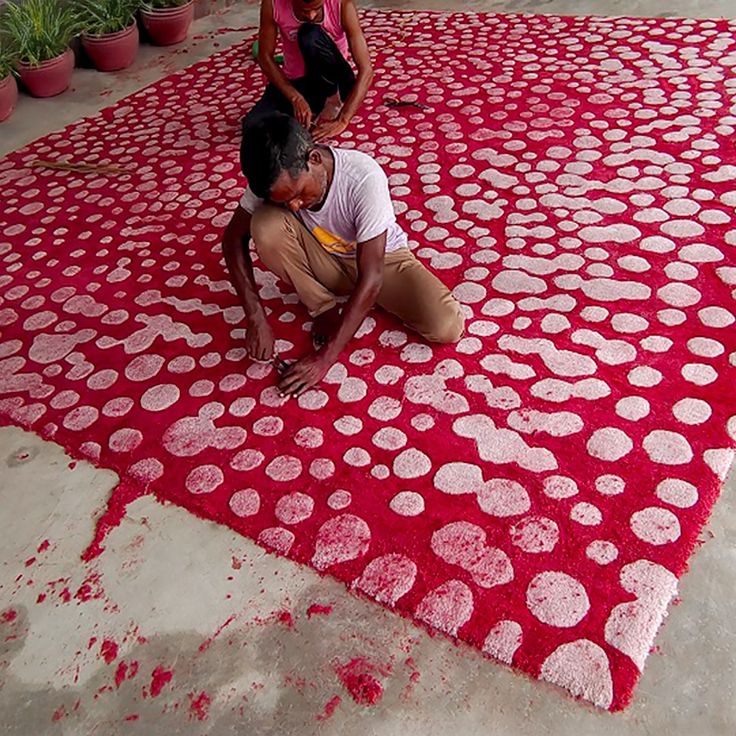
Key Parameters That Influence Rug Pricing
-
Material Used
-
Wool (New Zealand, Indian, blended, etc.)
-
Viscose (artificial silk – less durable but luxurious look)
-
Silk (natural silk – very high cost)
-
Bamboo silk (eco-friendly alternative to viscose)
-
Cotton (for backing or flatweaves – lower cost)
-
PET/Recycled fibers (for indoor-outdoor rugs)
-
Leather/Other specialty materials
-
-
Design Complexity
-
Simple designs (plain, geometric, stripes) are cheaper.
-
Intricate designs (fine florals, Persian patterns, modern abstracts) increase labor and cost.
-
Custom designs always add extra cost.
-
-
Density (Knots or Tufts per Square Inch)
-
Higher density = more material + more labor hours = higher cost.
-
Especially critical for hand-knotted rugs (e.g., 80 knots, 150 knots, 300 knots).
-
-
Pile Height
-
Low pile rugs cost less (less wool/viscose used).
-
High pile/shag rugs cost more (more material, thicker look).
-
-
Backing and Finishing
-
Type of backing (cotton cloth, canvas, latex, felt)
-
Special finishes like antique washing, luster wash, etc., add cost.
-
-
Handwork Detailing
-
Hand carving (for 3D effect) in hand-tufted rugs adds labor and cost.
-
Embroidery, metallic threads, hand knotting on tufted rugs – all cost extra.
-
-
Color Count
-
Rugs with more colors (6+ shades) involve more wool dyeing and higher production complexity.
-
-
Production Technique
-
Hand-tufted is generally cheaper.
-
Hand-knotted is more expensive due to the intensive labor and time.
-
-
Lead Time and Urgency
-
Rush production orders attract a premium.
-
-
Size Customization
-
Unusual sizes (like 5.5 x 7.8 ft) often have slightly higher wastage/material margin added.
-
-
Country of Origin (Labor Cost)
-
Made in India, Nepal, Turkey, or Iran – the production origin influences cost based on labor and craftsmanship tradition.
-

